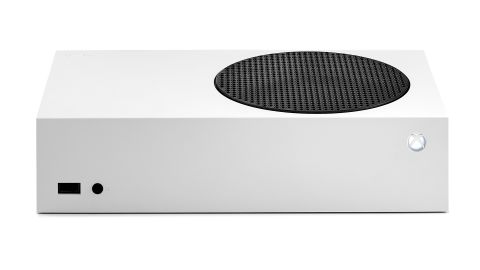The Xbox Series S is a tough console to nail down. It’s next-gen, but with one rather large drawback; it isn’t a 4K games console, which will undoubtedly rule out some potential buyers from the off.
But it is about more than just resolution. The Xbox Series S brings features and performance benefits to a price point we’ve never seen a high-tech console hit at launch before. And, after resolution, the price of the Series S is arguably the big talking point.
Price
The Xbox Series S is a remarkably cheap console, costing just £250 ($300, AU$500) – no wonder there was a collective gasp from members of the media when pricing was finally revealed. This compares to £450 ($500, AU$749) for the Xbox Series X.
Using Xbox All Access, where you can pay for the console in instalments, you can get a new Series S on a 12-month contract for £21 ($25, AU$33) per month, compared with £29 ($34, AU$46) per month for the Series X.
Its main rival, the PS5 Digital Edition, comes in at £359 ($399, AU$599). It is also missing a disc drive, but the difference is that it gets all the same 4K gaming performance and specs of the standard PS5 console, whereas the Series S has various performance downgrades on the Series X.
Build
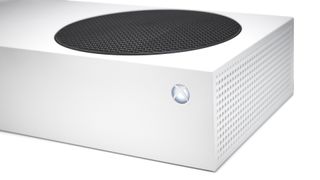
It’s not just the price tag of the Xbox Series S that catches your attention. Open up the box and you’ll be taken aback by the size of the console. It’s tiny compared with its big brother, the Xbox Series X, but also the PS5 and PS5 Digital Editions too.
Positioned horizontally, the Series S measures 28cm wide and 15cm deep. This is in stark contrast to Sony’s disc-less rival, the PS5 Digital Edition, which is 39cm wide and 26cm deep. This makes the Series S ultra-portable, and you’ll be more than happy to sling it into a rucksack and take it to a friend’s house. The ‘S’ and its relatively small frame will also take up less space on your AV rack.
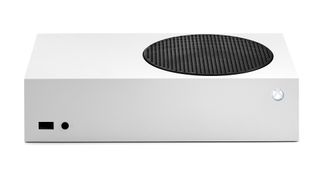
Resolution 1440p at 60Hz, 120Hz
Storage 512GB
Outputs HDMI, 3.5mm headphone jack, USB (Type-A) x3
Audio formats Dolby Digital, Dolby Atmos, DTS, DTS:X
HDR formats HDR 10, Dolby Vision
Dimensions (hwd) 6.5cm x 27.5cm x 15.1cm
Weight 1.93kg
The chassis is essentially an off-white plastic. It doesn't feel particularly expensive, but that’s hardly a surprise, given the bulk of Xbox’s budget has been spent on what’s inside.
Compared with the striking PS5, the Xbox Series S looks anything but flamboyant. Its only distinctive feature is a circular black grill for the fan, which makes it look more like a wireless speaker than a cutting-edge games console.
In terms of connections, the Xbox Series S doesn’t throw up any real surprises. On the front, there’s a USB (Type-A) socket, a 3.5mm headphone jack and the power button. On the rear, there are power, ethernet, HDMI and a pair of USB (Type-A) inputs.
The only socket we haven’t really encountered before is a slot for expanding the amount of storage on the Xbox Series S. And, depending on the number of enhanced games you intend to buy, there’s a chance you might have to use it sooner than expected.
In fact, storage is one of the biggest drawbacks for the Xbox Series S. On the box, it says it has 512GB of storage, but when you boot up the console and go into the system’s menu, that figure is nowhere to be seen. Before installing a single game, we are down to 364GB. Download a few enhanced games at 60GB+ and you’ll soon be reaching for an expansion card.
Be warned – the official Seagate Storage Expansion Card costs a whopping £220 ($220, AU$359). The good news is that if you already own an external hard drive with backwards compatible games on it for an Xbox One S, you should be able to plug it into the Xbox Series S and use it straight away.
Home screen

Power up the console and you’re greeted with the traditional Xbox GUI. On the one hand, it’s nice and familiar but we can’t help but think it’s a missed opportunity. Couldn’t Xbox have created a more exciting and inviting interface to wow its customers and usher in its next-gen consoles?
The tile system is still in play and so is the horizontal navigation. You can reach all the relevant areas, such as games and system settings, with minimal button presses. It’s quick to respond to your commands too. This could be down to a combination of more powerful CPU processing, the super-fast solid-state hard drive and even the new low-latency controller.
What’s even more noticeable is the speed at which games load. Compared with the previous generation of Xbox consoles, the Series S is much quicker. Not only does it get you through loading screens with a greater sense of urgency, with Quick Resume, you can now pick up games from where you left off in a matter of seconds. Xbox claims you can have three or four games on the go at any one time.
Controller
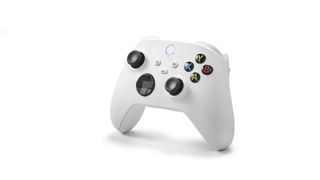
Like the X, the new Xbox Series S gets a new control pad. It’s supposed to be slightly smaller, although the difference is hard to spot. Irrespective of whether it’s shrunk, the controller still feels good in hand. The bumpers are more rounded, while the triggers have been given more sculpted grips and a new texture that also spreads to the rear of the controller.
Your hands and fingertips get better purchase when pressing down hard, and it feels like the texture pattern from the back of an Xbox Elite Wireless Controller (Series 2) has been placed onto the Xbox Series S controller. Which is no bad thing.
The controller also features what Xbox calls Dynamic Latency Input (DLI), which immediately synchronises each controller input with what you see on screen. Of course, your TV’s own lag is also part of the equation here, but at least the console is doing its bit to reduce lag. It feels as though the console is quick to respond to commands, whether navigating the console’s home screen and in-game too.
Another addition to the controller comes in the shape of a new dedicated ‘Share’ button, which means you can capture screenshots and clips and share your gameplay on social media. Those with older legacy controllers from an Xbox One S (or One X) will be pleased to know you can pair them with the Series S.
Features
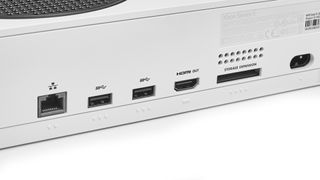
According to Liz Hamren, Head of Platform Engineering and Hardware for Xbox, the Series S delivers “four times the processing power of an Xbox One console". On paper, the figures are 4 TFLOPS of power for the Xbox Series S, compared with 12.15 TFLOPS for the Series X.
The Series S is "similar in CPU" to the Series X, but not identical. The Xbox Series X uses an 8-Core AMD Zen 2 CPU running at 3.8GHz (3.6GHz with SMT enabled) while the Series S uses the same CPU working at 3.6GHz (3.4GHz with SMT enabled).
The 'X' is powered by a 52CU (compute unit) RDNA GPU running at 1.825GHz, while its cheaper sibling has a 20CU, 1.565GHz GPU.
The Series S doesn’t have the graphics grunt of its sibling, meaning that resolution is a big difference between the consoles. The Xbox Series S has been geared towards outputting 1440p at 60Hz, up to a maximum refresh rate of 120Hz. It can upscale the picture to 4K to match your 4K TV, but you won’t be able to see next-gen games in native 4K. You can only play games in native 4K resolution (at up to 120Hz) on the Xbox Series X.
But we wouldn’t write off the Xbox Series S just yet. While it does lose out on graphical power and resolution, it still has a range of features that will appeal to anyone looking to make the jump from, say, an Xbox One S.
You can still enjoy refresh rates to up to 120Hz. The console also supports VRR, variable rate shading and ray-tracing just like the Series X. You get the same Quick Resume feature, so you can pick up where you left off at the touch of a button, a faster SSD hard drive and a speedier user experience. All of these mean the Series S is a big step up from the previous generation Xbox One S.
All the streaming apps you need are there too, including Netflix, Spotify, Sky Go, YouTube, Amazon Prime Video, Apple TV and Disney+.
Picture
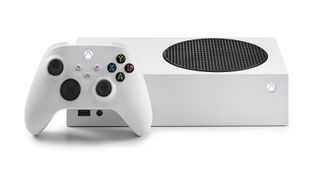
When it comes to playing games on the Xbox Series S, it’s difficult to find a lot to grumble about for the money. While it’s not native 4K, what it does dish out is easy on the eye. Play Madden 21 and the intro video bursts into life with a colourful and vibrant display of NFL uniforms and impressive-looking stadia shots.
Detail on jerseys and boots is good. The reflections on player helmets are glossy and add polish to the presentation. The motion of the players, whether they’re walking slowly into formation or blitzing the opposing team, is stable and we don’t notice anything in the way of tearing, judder or artefacts.
Gears 5 looks good too, even though it isn’t being rendered in true 4K. Compared with the Xbox Series X, the more powerful console delivers a picture with more ‘wow’ factor, but the Series S is by no means embarrassed. The on-screen detail is good enough, with decent texture on chiselled faces and war-torn body armour. Motion is stable, and there’s good insight in the shadows.
As a streaming device, the Xbox Series S presents a solid case too. Playing Altered Carbon via Netflix, the Series S produces a watchable picture, with none of the artificial appearance that can sometimes be served up by poorer streaming devices.
There’s a good sense of clarity and motion, with detail and definition both excellent too. As Quellcrist Falconer makes Angelfire rain down on her pursuers, the screen lights up with bolts of blue neon. As each soldier is struck down, the flames turn to embers, small pin pricks burning briefly, but ever so brightly, in Dolby Vision HDR. The detail in the shadows as she hides behind a fallen tree is nicely judged and not overly dark.
We’d say the Xbox Series S is comparable to an Apple TV 4K for picture quality, which is a great video streamer in its own right. That’s quite impressive for a games console.
Sound
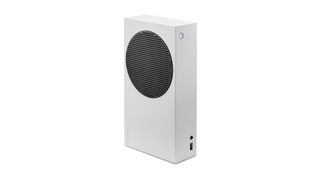
Despite being a next-gen console, we’re still left scratching our heads at the way some audio settings have been implemented.
Instead of being able to pass unadulterated audio from your streaming service of choice through to your AV amp, the Xbox needs to decode and re-encode it. You need to navigate the console’s audio settings and pick one format which the console will then apply to everything. You can select from DTS Digital Surround, Dolby Digital, Dolby Atmos for Home Theatre or DTS:X for home theatre. It’s not a particularly next-gen way of going about things.
Click on DTS:X and you’re told you need to download the DTS Sound Unbound app. This unlocks DTS:X for home theatre, but you still need to pay a further £17 to unlock DTS Headphones:X. Similarly, you need the Dolby Access app to get free Atmos support for your home theatre, but if you want Dolby Atmos for Headphones, that will cost you extra too. Seriously?
However, the Dolby Access app is handy for setting up a Dolby Atmos soundbar, AV receiver or TV. You can customise your audio settings and even switch on a built-in audio upmixer if you want some of the Atmos experience, but don’t happen to own a Dolby Atmos speaker package.
Oddly, during set-up we are greeted by a pop-up from the console asking if we want to pass Blu-ray audio directly to our AV receiver – someone clearly forgot that the Xbox Series S is a disc-less console.
Once set up, you get is a perfectly acceptable sonic performance. The console sounds punchy and lively with a decent sense of clarity, and an even tonal balance. It’s not as subtle or refined as a dedicated budget 4K Blu-ray player, such as the Sony UBP-X700, nor does it have the same sense of timing and natural flair with music. But it sounds lively enough when firing out the 80s soundtrack to Cobra Kai and the dialogue sounds clear and relatively weighty.
Switch to the opening chapter of Gears 5, and as Kait, Marcus et al arrive at the opening to the cave, the detail and definition in the whirring rotor blades is impressive. Combine this with the strings of the soundtrack, and the sound of the birds circling around the huge opening and the console creates a fine sense of immersion and atmosphere as you head underground.
Verdict
Xbox has been pretty smart with the Xbox Series S – the price tag alone will be enough for some to give it serious consideration. However, if true 4K resolution gaming or playing 4K Blu-rays matters to you, it won’t even be on your radar.
If you aren’t fussed about those and just want to play Xbox exclusives with some of the other game enhancements, such as VRR and the high frame rates, then the Series S isn’t a bad shout.
It could also be an affordable console for a second room or to keep the kids happy. After all, you still get a huge chunk of future-proofing and day-to-day performance upgrades that make it a decent jump up from the Xbox One S.
The Xbox Series S isn’t perfect. The user interface feels a little dated for a next-gen console and there are still too many quirks when you want to use it as part of a proper home theatre system. While it won’t necessarily appeal to everyone, if you’re happy with what the Series S can offer, you won’t be disappointed.
MORE:
Read our Xbox Series X review
